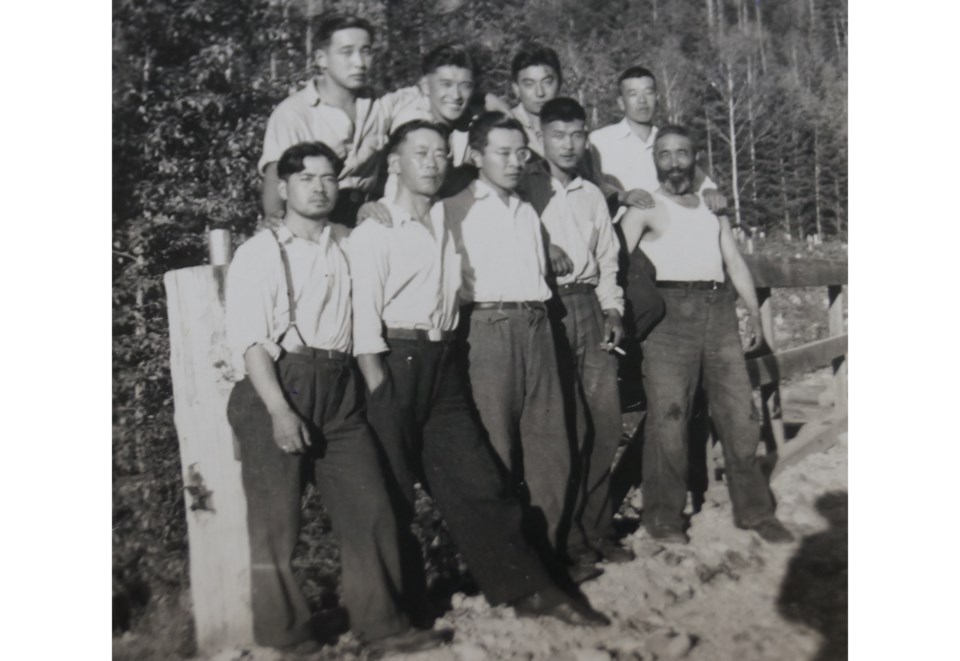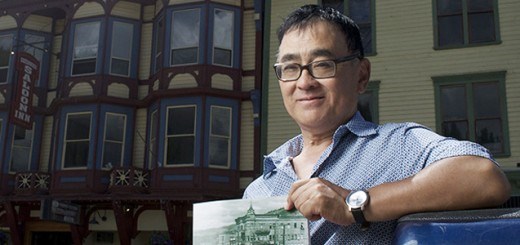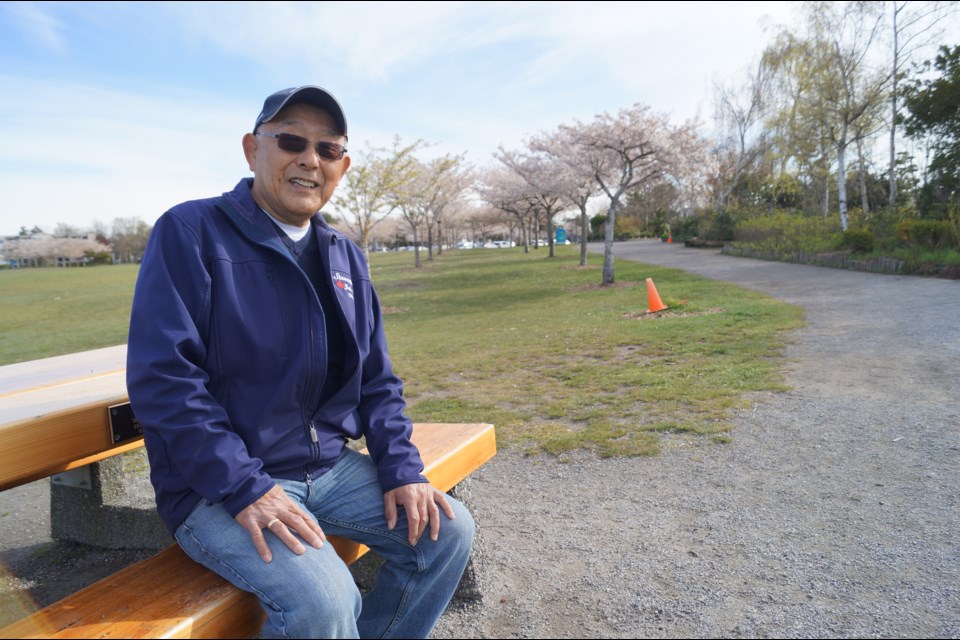Every Sunday morning, and a few times during the week, 70-year-old Rick Yodogawa gathers with a group of friends — about a half dozen Japanese-Canadian ladies near his age — to walk around Garry Point Park and grab a quick coffee and bite to eat at Pat’s Galley on Bayview Street, such is the routine.
This walking group is bonded by friendships, many from their days at Steveston High, as well as each person’s intimate connection to B.C.’s Japanese internment camps during the Second World War.
On April 29, at St. Joseph the Worker Parish, a special public event will allow the old guard of the Japanese community in Steveston to mark the 75th anniversary of the establishment of such camps.
“My grandparents ran Mukai Confectionary at No. 1 (Road) and Moncton (Street). When they got interned, the government took it all,” explained Yodogawa, who was born in Greenwood, B.C. — the site of one of 10 Japanese internment camps, 100 miles off the coast.
“My parents started Mooks Café after settling there,” he said.

Granted, he was four-years-old by the time he left, he’s asked what he recalls about the camp.
“Not much,” he said.
But as he circles the Point, memories are vocalized.
“It was all planks. I think we were in the No. 5 Building. All the families lived in the same place. It was jam packed, I’ll tell you that,” Yodogawa chuckled.
Other memories include playing with toy cars at the church and a scary moment when his brother slid down a hill and scooted beneath a moving truck, unimpeded.
“I remember Doukhobors coming. They burned this building and danced around this building. They were naked.
“I remember coming back when I was four-years-old. I was on a bus and in Vancouver. They say I was on all fours on the pavement, the concrete pavement in Vancouver. I never had seen a street because [Greenwood] was all wood. I kept touching the marble buildings,” said Yodogawa.
Growing up in Steveston in the ’50s and ’60s was a trying time for the Japanese, who were encouraged by the government, after the war, to either head back to Japan, or work east of the Rockies. So, Steveston’s Japanese community was a shell of what it used to be. Yodogawa’s parents re-established their fishing business as he grew up with five siblings and a good group of friends.
He recalls the numerous swimming holes, including one off Shady Island that took his friend’s life.
He frequently faced racism, although he was thankful for his best friend Larry, who was Caucasian.
“There were a few scuffles. That’s when my dad put me in Judo.
“I didn’t want to go. He dragged me out in my knees. I had holes in my pants, my knees were bleeding,” chuckled Yodogawa.
Little did he know that moment would help define his life.
Judo and martial arts, he said, became a rallying point for the Japanese in Steveston, as it helped define a unique Japanese-Canadian culture, now marked by a serious period of injustice.
“But it took me three years to win a match,” he laughed.
While Yodogawa eventually moved to Surrey after graduating as a Packer, he maintained ties to Steveston Judo Club and eventually coached the B.C. Judo team out of the Martial Arts Centre for 15 years, travelling to Japan and Europe for competitions.
Fate would have it that his wife passed away a few years ago. It was then that he reconnected with some of his schoolmates — and new walking pals — bonded, in part, by having to make sense of a tumultuous early childhood.

Those childhood memories will be recounted with the help of fellow Greenwood native Chuck Tasaka at St. Joseph the Worker Parish (April 29 at 2 p.m. at 4451 Williams Road), where there will be storytelling, Sakura singers, Japanese dancing and a Nikkei National Museum slideshow of the camps.
Tasaka is also fundraising to build a small memorial park at Greenwood, in the Kootenays, as there is nothing official to mark that moment in history.
Tasaka said it’s fitting to have the event at St.Joseph, as that’s where the Franciscan Sisters of the Atonement began working to convert the Buddhist Japanese in Steveston. He credits the sisters for helping the Japanese during these tough times.
“This is where it all started in 1942,” said Tasaka.
“No community wanted us,” he said, of the time when ethnic Japanese were declared alien enemies of the state.
Greenwood was an old copper mine community and near ghost town at the time. Old hotels were used as barracks and it was a trying time, to say the least.
“Families were split up, as men had to work elsewhere,” said Tasaka.
In Greenwood, nuns stepped in, he said, to educate and convert the children.
“We were fortunate that education started immediately. The feds and province squabbled over who would educate us,” said Tasaka, a retired teacher from Ladysmith.
Since retirement, Tasaka has studied the Nikkei history and worked closely with fellow historians.
The public event (tickets are $10 at the door) will help raise funds to establish the Nikkei Legacy Park in Greenwood that Tasaka believes is long overdue.
For more information, contact Tasaka by email at [email protected].



